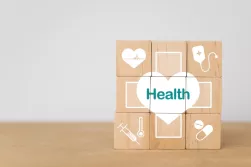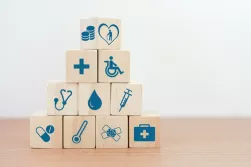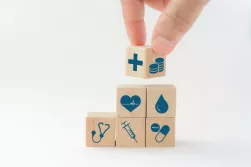Medication Safety is one of those terms that can be woven into anything related to medications. Adverse event from an anticoagulant? Medication safety. Sterile compounding? Medication safety. Regulatory compliance? Medication safety. Medication administration? Medication safety. REMS? Medication Safety. Electronic order sets? Medication safety. The list can go on and on and on and rightfully so since safety plays a role throughout the entire medication use process. While many medication safety officers do juggle one or several of these responsibilities, at the heart of any medication safety program is reducing the risk of medication errors and patient harm. Here are 5 things you need to know NOW about medication safety.
Safety culture makes ALL the difference. Safety culture is one of those weird intangible concepts that is difficult to explain or put your finger on but has such a profound effect on how situations can unfold. I’ve given many lectures on safety culture, and I always like to start by painting a picture of a busy pharmacy and looking at how a scenario could unfold in different safety cultures. In a strong safety culture, an error is caught before leaving the pharmacy and a system fix is later put in place to prevent that error from happening again. In a lower safety culture, an error reaches the patient who subsequently goes into cardiac arrest resulting in an overhead call for a code blue. Again, hard to put your finger on exactly what it is, but has a profound effect. I can go into many technical aspects of safety culture, but I’ll spare you the details. The key takeaway is that it all starts with psychological safety or how comfortable everyone is with speaking up, disagreeing openly, or asking questions without fear of negative repercussions. In a later article, I’ll provide more specific tips on how to build psychological safety at your pharmacy.
Saying (and repeating) “BE MORE CAREFUL!” does NOT make a safer system. Instead, higher leverage strategies are needed to prevent errors. The Institute for Safe Medication Practices has an infographic entitled the ‘hierarchy of effectiveness of risk-reduction strategies’ that displays low, medium, and high-leverage strategies. Low-leverage strategies, such as educational programs and telling someone to “Be more careful!”, focus on human reliability. As humans are fallible and to err is human, we simply cannot educate ourselves to safety. Medium-leverage strategies are a step above and include redundancies and alerts but may need reinforcement and periodic updating. High-leverage strategies, such as forcing functions, computerization, and automation, may take longer to implement, but is most effective because it can eliminate the risk of errors altogether. So, if you find yourself saying “BE MORE CAREFUL!” over and over again, pause, check yourself, and ask ‘What higher leverage strategies can we put in place to prevent this error from happening again?’
Learn from events that happen outside your organization. There is something called normalcy bias when errors occur at outside organizations where people think ‘That won’t happen here.’ But guess what? It can and it will. Don’t rely on solely on reported medication errors at your organization! Look proactively at events that happened at other organizations and learn from them. Identify gaps internally based on the shared event and work to close those gaps before the same error occurs at your organization.
Every healthcare institution needs a dedicated medication safety leader. The American Society for Health-System Pharmacy (ASHP) has a white paper on the need for a dedicated medication safety leader that I highly encourage all pharmacy directors to read. Medication safety simply cannot be another hat one wears as a pharmacy manager or director who is also managing budgets, monitoring financial performance, implementing cost-saving measures, addressing regulatory concerns, maintaining a competent and engaged staff, and more! A medication safety leader sets the medication safety vision, identifies opportunities to improve the medication-use process, and leads efforts and initiatives to prevent medication errors. Advocate for a dedicated medication safety leader at your institution and use patient safety stories to drive home the need.
- You are not alone! I meet a variety of people in medication safety. Those who juggle multiple responsibilities where medications safety is just one of the many balls they need to keep up in the air. Those who have a dedicated role in medication safety but feel like they are carrying the weight of the world on their shoulders. Those who are new to medication safety and don’t know where to start. One thing that I say to everyone in medication safety is ‘You are not alone!’ There are a ton of resources out there (e.g. ASHP Medication Safety Resource Center and the Institute for Safety Medication Practices newsletters and self-assessment tools) that you can and should leverage. You can also connect with others in medication safety via forums such as the Medication Safety Officers Society (MSOS) or ASHP Connect for Medication Safety. I also highly encourage joining state or national professional organizations that have a medication safety group to have a network of other medication safety professionals you can lean on and learn from!



